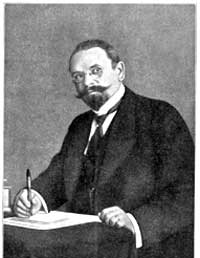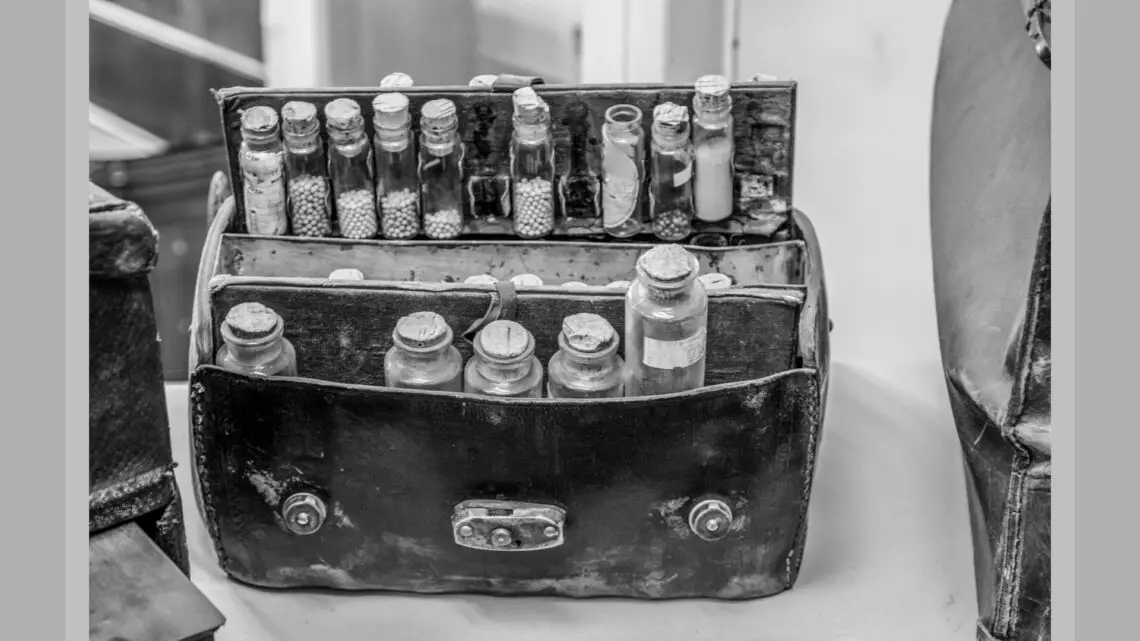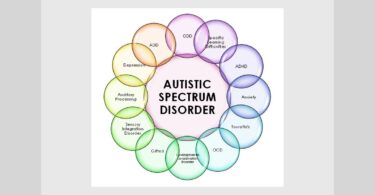
Richard Haehl. Photo Courtesy of http://www.kwibus-verlag.de/homoeopathie-bilder.html
In this edition, I wish to review an interesting historical event narrated by Dr. Richard Haehl in 1922. He was a devoted Homeopathic physician, who graduated from Hahnemann Medical College of Philadelphia and was a member of several homeopathic societies and organizations, including the Homeopathic Medical Society of North America.
As of 1897, Dr. Haehl had made several efforts to obtain Hahnemann’s original manuscripts and records for publication. In 1900 he visited Dr. Carl von Boenninghausen, the son-in-law of Melanie Hahnemann’s in order to negotiate with him for Hahnemann’s literary heritage. Haehl also wanted to acquire more intimate information regarding Hahnemann’s life in Paris, but unfortunately was able to convince Dr. Boenninghausen to release the information.
Five years later in 1905, Dr. Haehl visited England and saw Hahnemann’s grandson Dr. Leopold Siiss-Hahnemann, who was living at Ventnor in the Isle of Wight. There he was allowed to inspect part of Hahnemann’s literary legacy of the Kothen period. The Director of the Training College, Mr. Albrecht, of Kothen, had already made extensive use of it for his short biography of Hahnemann. What rendered this visit of special value to Dr. Haehl, were his conversations with the grandson Leopold, who had spent his early youth (until age 9), in the house of his grandfather (the great Hahnemann). Leopold had also been one of the few relatives present at Dr. Hahnemann’s funeral.
In 1906 Dr. Haehl traveled with his good friend Professor William Boericke, from San Francisco to Darup. They both attempted to obtain the release of the literacy legacy, particularly of Hahnemann’s case-books, and of the sixth edition of the Organon, but as Dr. Haehl stated, “unfortunately again in vain”.
A fourth and longer journey in 1909 took him to America. From there he also brought home numerous copies of letters, pictures, etc. The reproductions of the Hahnemann monument in Washington are made from his own photographs.
Dr. Haehl said “I applied again to Darup, and I begged more insistently, more obstinately than ever for the yielding up of the unused legacy. Dr. Carl von Boenninghausen had died meanwhile, leaving no direct descendants.”
Hahnemann’s literary heritage had therefore changed hands several times. In desperation, Dr. Haehl had almost given up hope, when at last in 1920 with Dr. Boericke’s help, he succeeded in obtaining the complete legacy of the master. The documents had been held back for almost eighty years, but were at last to become accessible. In his biography, Dr. Haehl wrote , “What was scientifically valuable from Hahnemann’s legacy, his case-books, his symptom index, his original provings of medicines and a very considerable number of letters are today in my possession. The legacy contains an almost overwhelming amount of valuable material, which sheds a completely new light on the period in Kothen and Paris.”
Dr. Richard Haehl with help of his team of professional homeopaths, then began organizing and translating these valuable materials. They were anxious to give an actual representation of Hahnemann’s own development and of his therapeutic reform, and to allow the facts to speak for themselves. Their goal was to demonstrate in detail and in a reliable manner how Hahnemann arrived at his principles of reform, how one developed from the other, and how he proceeded in his own professional activities.
In this regard, here is a quote by Dr. Haehl:
“Although this work has been built up with scientific accuracy and in accordance with scientific principles, it does not only appeal to the smaller circle of medical men; it is written rather, for all those who take an interest in therapeutics in general, and particularly those who have a keen interest and a deeper understanding of Homeopathic treatment.”
Here, for review, are some important historical date lines:
In February of 1842, Dr. Hahnemann completed the sixth edition of the Organon.
In July of 1843, Dr. Hahnemann passed away in Paris. Mrs. Melanie Hahnemann became the custodian of his professional writings.
From 1843 till 1865, Melanie Hahnemann was the guardian of the sixth edition of the Organon.
From 1865 till 1878, many homeopaths negotiated with Melanie to publish the sixth edition of Organon; they all failed.
From 1870 to 1871, during the war, Dr. Hahnemann’s manuscripts and casebooks were moved to the home of Dr. Carl von Boenninghausen for safekeeping.
In 1878, Mrs. Melanie Hahnemann passed away.
From 1897 till 1906, Dr. Richard Haehl made several unsuccessful attempts to negotiate the publication of the sixth edition.
In 1920, with help of Professor William Boericke, the sixth edition of Organon was purchased.
In 1921, Dr. Haehl published the sixth edition of Organon, which was from the original handwritten transcript copy of Dr. Samuel Hahnemann.
In 1922, Dr. Boericke published the English translation of Organon of Medicine, the sixth edition.
We honor Dr. Richard Haehl and Professor William Boericke for their relentless dedication and great contribution.





Thank you Dr Navab for that wonderful story of Dr. Haehl’s incredible persistence. I am delighted that you are doing this series on the history of homeopathy. Keep up the good work.
Dear Janice,
Thank you so kindly for your encouraging comment!
Have a healthy day,
Iman
Thank you Iman for keeping the history of our
Samuel Hahnemann up dated.
My dear friend Dr. Beatriz,
Thank you so kindly for your encouraging comment!
Have a healthy day,
Iman
Dear Iman,
Read all the three parts of the article. The history Of homeopathy written by you is thrilling! please keep up the good work.
Dear Venkatesh,
Thank you so kindly for your encouraging comment!
Have a healthy day,
Iman